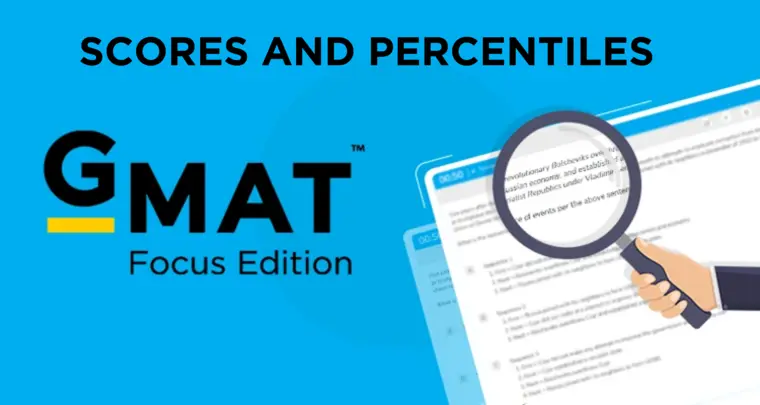The purpose of this article is to help you think about negating statements so that you can apply the negation test for CR assumption questions. In this article, we will look at how to negate using the set theory approach for negating statements. This article is a pre-requisite to our free session on “Prethinking for CR assumptions”. In addition, do not forget to register at e-GMAT to attempt a free quiz on negating statements.
This article has three parts:
- Introduction to Negation: In this section, we will briefly talk about what negating a statement means and why is it important.
- Key skills for negation
- Four Practice Questions
If you feel, you lag behind in the planning part of your preparation, we invite you for a free webinar on GMAT Strategy. Learn the best way to prepare for GMAT by taking a free trial of our online GMAT preparation resource. You can write to us at acethegmat@e-gmat.com if you need any GMAT related advice.
What is negation and negation test?
To understand the above let’s take a simple argument.
Every super-smart GMAT aspirant registers on GMATClub. Hence, every Harvard admit is a registered student at GMAT Club.
- Assumption: Harvard only admits super-smart GMAT aspirants.
Negation technique can be used to determine if the given answer choice is the true assumption or not. In other words, it a sure shot way to validate the answer (recommended use) or to determine whether an answer choice is an assumption
Why does negation test work?
The correct answer choice is like a missing premise. This means that it has to be true for the conclusion to hold true. This implies that the negated version of the correct answer choice will shatter, falsify, or invalidate the conclusion. Hence, once we have narrowed down our answer choice(s), we can verify it by evaluating whether the negated version really shatters the conclusion or not. If it does, then your selected choice is indeed the conclusion, otherwise not.
In the example above, the negated version of the assumption could be one of the following:
- Harvard does not only admit super-smart GMAT aspirants.
- At least one Harvard admit is not super-smart aspirant.
Ok, sounds good. But the next question comes to mind.
How do we negate?
When you think of negation, it helps to think in terms of sets. Each answer choice is “a part” of a superset.
Hence, the negated statement = Super Set – Space occupied by the answer choice.
Negated Statement = Super set - Space occupied by the answer choice
Let’s take an example.
All GMAT test takers who take the exam after 1 month of preparation perform better than they did in their first mock
Q: What is the super set?
- Super set is the set of possibilities for GMAT takers who take the exam after one month of preparation. Let’s assume that there are 100 test takers who take the exam after 1 month of the preparation. Then there are multiple possibilities that exist for this group of test-takers
- All 100 test takers who take the exam after 1 month of preparation perform better than they did on their first mock.
- Not All test takers who take the exam after 1 month of preparation perform better than they did on their first mock.
- Some test takers who take the exam after 1 month of preparation perform better than they did on their first mock.
- Most test takers who take the exam after 1 month of preparation perform better than they did on their first mock.
- Less than 50% of test takers who take the exam after 1 month of preparation perform better than they did on their first mock.
- No test taker who takes the exam after 1 month of preparation performs better than he/she did on their first mock.

There are a few things to note in the picture above.
1. Understand the Super Set: Note, we are only talking about a segment of population – the test takers who take the exam 1 month after preparing for their GMAT. This is our Universe or the super set. We are not concerned with test takers who take the exam after 15 days of preparation or 2 months of preparation. Words such as “Who” (user for people), “that” (animals, corporations, etc.), “which” and “those” have a segmentation effect. Therefore, any answer choice that deals with choices outside this segment – the segment in which people take the exam after 1 month of preparation – is incorrect.
Take Away: Words such as Who, that, which, those, etc. have a segmentation effect.
2. Understand the Sample space occupied by the choice: Once you have defined the Super set, understand the sample space occupied by the choice that you want to negate. Words such as all, none, some, most, etc. define these sample spacing. It is important to know what these words imply in terms of sample spaces. Taking the “Super Set” in discussion and assuming that it contains 100 test takers, here is what the sample spaces mean:
| Super Set = Set of 100 test takers | |
|
Term |
Sample Space it occupies |
| All | All the 100 Test takers |
| Some | 1 to 100 test takers (including both 1 and 100). Note some does not include 0 |
| Not All | 0-99 Test Takers (Notice how Not All is different from Some) |
| Most | 51-100 test takers |
| None | 0 Test takers out of 100 |
3. Understand what negation means: Negation or logical negation means that you select an answer choice that occupies the sample space that excludes the original choice. If it maps to another term above, then perfect, otherwise you may make the use of word “Not” to find the logical opposite. In the example above, the logical opposite of “All” is “Not All”. Note, that you may be tempted to use “Some” but “some” includes All (Notice, it includes 100) and hence is not the logical opposite. Here is a table of logical opposites.
|
Term |
Logical Opposite |
| All | Not All |
| Some | None (Notice, Some does not include 0) |
| Not All | All |
| Most | Not more than half (which means half or less, 0-50) |
| None | Some |
| Exactly X | Not Exactly X (Note that the sample space is both before XX and after X, just not X) |
| Significant | Insignificant |
| Never | Sometimes |
| Always | Not Always |
| Everywhere | Not everywhere |

If you feel, you lag behind in the planning part of your preparation, we invite you for a free webinar on GMAT Strategy. Learn the best way to prepare for GMAT by taking a free trial of our online GMAT preparation resource. You can write to us at acethegmat@e-gmat.com if you need any GMAT related advice.
Coming back to the example answer choice:
All GMAT test takers who take the exam after 1 month of preparation perform better than they did in their first mock. Let’s now look at the answer choices:
| Answer Choice | Explanation |
| Some Test Takers who take the exam after 1 month of preparation perform better than they did on their first mock. | Incorrect: For the reasons discussed above. Notice “some” = 1-100 whereas we are looking for a sample space of 0-99. Hence, this choice is not correct. |
| Most test takers who take the exam after 1 month of preparation perform better than they did on their first mock | Incorrect: Only includes 51 to 100 |
| Not All test takers who take the exam after 1 month of preparation perform better than they did on their first mock | Correct: This is the correct choice. Notice, how this occupies the complimentary sample space and is the logical opposite. |
| Less than 50% of test takers who take the exam after 1 month of preparation perform better than they did on their first mock. | Incorrect: Only includes 0-50 |
What if you negate the verb?
Let’s bring the Original choice again for clarity purposes.
All GMAT test takers who take the exam after 1 month of preparation perform better than they did in their first mockNotice, that in all the negated choices above, we did not modify the verb – perform better. Lets see what happens when we negate the verb. Consider the following negated choice
Neg 1: Some GMAT test takers who take the exam after 1 month of preparation do not perform better than they did in their first mock.
What does the above answer choice mean?
The answer choice implies that, out of 100 test takers, between 1 and 100 test takers did not perform better than they did in their first mock. This means that 0 to 99 test takers did perform better on their mock. This is the same is “Not all”. Hence, the above answer choice is Correct. Let’s see how this happened
| Test Taker did not perform better | Test taker did perform better |
| 1 test taker did not perform better | 99 test takers performed better |
| 100 test takers did not perform better | 0 test takers performed better |
Take Away: It is sometimes possible to negate by either negating the subject of an answer choice or by negating the Verb.
If you feel, you lag behind in the planning part of your preparation, we invite you for a free webinar on GMAT Strategy. Learn the best way to prepare for GMAT by taking a free trial of our online GMAT preparation resource. You can write to us at acethegmat@e-gmat.com if you need any GMAT related advice.
Practice Sentences
Example 1
Most GMAT test takers who take the exam after 1 month of preparation perform better than they did in their first mock. (Multiple answers may be correct)
- Most GMAT test takers who take the exam after 1 month of preparation do not perform better than they did in their first mock.
- All GMAT test takers who take the exam after 1 month of preparation perform better than they did in their first mock.
- No GMAT test taker who takes the exam after 1 month of preparation performs better than they did in their first mock.
- At least half of GMAT test takers who take the exam after 1 month of preparation perform better than they did in their first mock.
- Up to half of GMAT test takers who take the exam after 1 month of preparation perform better than they did in their first mock.
- Up to half of GMAT test takers who take the exam after 1 month of preparation do not perform better than they did in their first mock.
- Half or more of GMAT test takers who take the exam after 1 month of preparation do not perform better than they did in their first mock.
Example 2
Every internet dating profile in the world begs for some spontaneity (Multiple answers may be correct)
- Not every internet dating profile in the world begs for some spontaneity
- No internet dating profile in the world begs for some spontaneity
- Most internet dating profiles in the world begs for some spontaneity
- Some internet dating profiles in the world do not beg for some spontaneity
Example 3
Innovations such as iPhone happen nowhere outside Apple. (Multiple answers may be correct)
- Innovations such as iPhone do happen outside Apple.
- Innovations such as iPhone do not happen outside Apple.
- No other company is as innovative as Apple is.
- Innovations such as iPhone happen both inside Apple and in other companies.
Example 4
No sane person who has never given a ride to a stranded passenger will give a ride to someone dressed in a hood (Multiple answers may be correct)
- Some sane people who have never given a ride to a stranded passenger will give a ride to someone dressed in a hood
- At least one sane person who has never given a ride to a stranded passenger will give a ride to someone dressed in a hood
- All sane people who have never given a ride to a stranded passenger will give a ride to someone dressed in a hood
- No sane person who has ever given a ride to a stranded passenger will give a ride to someone dressed in a hood.
- Some sane people who have given a ride to a stranded passenger will give a ride to someone dressed in a hood
Example 5
Every writer will tell you: first, find a good café. (Multiple answers may be correct)
- Every writer will not tell you: first, find a good café.
- Some writers will not tell you: first, find a good café
- No writer will tell you: first, find a good café.
- Most writers will not tell you: first, find a good café.
Example 6
All the people who became sick did not get vaccinated.(Multiple answers may be correct)
- Not everyone who became sick got vaccinated.
- Some people who became sick did not get vaccinated
- At least one person who became sick got vaccinated
- All people who got vaccinated did not become sick
- Most people who did not become sick got vaccinated
- Most people who did not get vaccinated did not become sick.
Here are the detailed solutions to these examples – https://bit.ly/2Z4G8Ae
If you feel, you lag behind in the planning part of your preparation, we invite you for a free webinar on GMAT Strategy. Learn the best way to prepare for GMAT by taking a free trial of our online GMAT preparation resource. You can write to us at acethegmat@e-gmat.com if you need any GMAT related advice.














